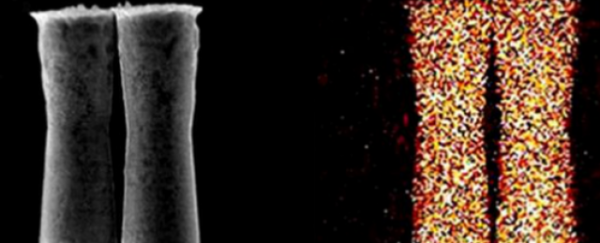A team of engineers and clinicians has, for the first time, tested the performance of drug-delivering micro-motors inside a living creature.
An artificial micro-motor made from polymers coated in zinc, and carrying gold nanoparticles, was developed by the team and tested inside a mouse with encouraging results, which were described in the journal ACS Nano.
"Most previously reported self-propelled motors rely on non-biocompatible chemical fuels such as hydrogen peroxide," lead author Wei Gao from the University of California, Berkeley told New Scientist. Importantly, their micro-motor is self-propelled using stomach acid.
"We demonstrated that the acid-driven propulsion in the stomach effectively enhances the binding and retention of the motor, as well as the cargo payload [drugs] on the stomach wall," the team wrote.
They say the work could "significantly advance" the emerging field of micromotors, and "open the door to in vivo evaluation and clinical applications of these synthetic motors."
The development of small-scale synthetic motors, or nano-robots, as some people have referred to them, has advanced significantly over the past decade. It is expected that these tiny motors will improve drug delivery and disease diagnosis, and possibly enable nano-surgery.
Various types of synthetic motors, using different propulsion mechanisms, have previously been made to operate inside biological fluids. But the University of California researchers say the performance of these motors has only ever been tested outside of the body.
The believe their zinc-based motors hold "great promise" for use inside the body - particularly for gastric drug delivery - due to several important features. In addition to being self-propelled by stomach acid, they can be loaded up with relatively large payloads of drugs, which they can auonomously release, and when their job is done they simply self-destruct, dissolving in the gastric acid and leaving nothing toxic behind.
The motors are polymer tubes - about 20 micrometres long, or about the width of a human hair - lined with zinc. Inside the stomach, the zinc reacts with gastric acid producing hydrogen bubbles, which propels the motors into the organ's tissue.
The team applied its zinc-based motor to the stomach of living mice via something called gavage administration, which means they essentially force-fed them through tubes. In order to test the importance of their motor's propulsion, they administered a control to another set of mice - a similarly constructed micro-motor unable to move in the stomach.
They ensured the mice had fasted overnight, to avoid any unwanted influence of food on the mobility, or performance of their motor.
Two hours after the motors were ingested, the mice were killed and the inside of their stomachs were examined. The zinc-based motors were far more effective at penetrating and staying put inside the thin layer of mucus protecting the stomach tissue.
The researchers suggest this is because the tube-shaped motors are actively propelled, almost like small missiles, and therefore they are more likely to get trapped in the stomach lining - which is the end goal.
The researchers also tested the release of a "cargo" - in this case, gold nanoparticles, which are commonly used as imaging agents and drug carriers.
They said the gold nanoparticle-loaded motors did not affect the propulsion ability. They also found that when loaded onto their zinc-based motor, the retention of gold nanoparticles in the stomach tissue was three times greater than when it was administered orally.
Bradley Nelson at the Swiss Federal Institute of Technology in Zurich told New Scientist that more evidence was needed to prove the design was responsible for the higher retention of gold nanoparticles.
"From the description of the experiments performed, the micromotors move randomly and some appear to diffuse more rapidly into the mucosal lining," he said. "The mechanism of enhanced diffusion is not yet clear."
But other have applauded the achievement. "This is really a first-of-a-kind study and a very important one in the micromotors field," Chemist Tom Mallouk at Pennsylvania State University in the US told New Scientist. "Importantly, it shows that micromotors can be more effective for the delivery of nanoparticles than passive carriers."
Source: New Scientist
